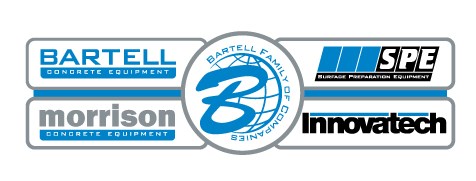 Add My Company
Add My Company
Sign In
How Tooling Can Make or Break Your Concrete
04-01-2016

You might have the right experience and you might have the right machine for your concrete grinding. But if you don’t have the right diamond tooling, you still might miss the mark.
There are a couple pitfalls that contractors can slip into that we hope you can avoid. The truth is that tooling has the potential to make or break your job, regardless of what else you might bring to the job.
Let’s make sure that doesn’t happen.
Here are 3 mistakes and ways to correct them to make a killer polished concrete floor.
Mistake #1: Poor Quality Tooling is Inconsistent
If you’ve used poor quality tooling before, you’ll already know that its inconsistency isn’t going to be a help on the job. Your scratch patterns won’t be uniform, there might be inconsistent grooves, and the unpredictability of your tooling is going to make it very difficult to achieve the results you desire.
Solution #1: Good Quality Tooling is Reliable Tmag Diamond Tooling
Whether you order it now, 6 months from now, or even a year, good tooling is consistent and trustworthy. Good quality tooling will give you consistent and uniform scratch patterns at every grit level. The performance and effectiveness of the tooling will be consistent from order to order. Polished concrete projects are notorious for having many variabilities, so knowing what you’re getting with every new order of consumables is going to make your polishing projects run smooth.
Mistake #2: Changing Systems Frequently
Trying to find the right Floor System can be a tricky thing. But changing systems regularly is going to make it challenging to manage the training of staff, buying of materials and most importantly the delivery of a consistent quality product.
Solution #2: Pick a System, Learn it
After a decent amount of research and education, decide on a system and take the time to learn it. Don’t feel the need to invest tens of thousands of dollars into a system that doesn’t appear to be doing the trick, but still allow enough time to work through the learning curve. Every manufacturer will approach things a little differently, so give time to allow for adequate testing before abandoning ship. It is always highly recommended to test new systems on a ‘test slab’ (in your warehouse or otherwise) before trying a new system on a customer project.
Mistake #3: Wrong Bond for the Wrong Floor HardnessTmag Diamond Tooling
Starting with the wrong bond or grit level of tooling when polishing concrete is a good way to damage the slab and waste time/money. Not properly matching the right tooling for the right floor can cost you extra labour from non-performing tools, extra material cost from excessive wear on tools or even worse: damage your slab to the point where it is challenging to produce a quality finished product.
Solution #3: Know your bonds and your floor
Once again, this is where that operator experience plays a significant role. Using a scratch test or other measurement equipment to accurately measure the hardness of the concrete will allow you to properly which bond you need to maximize your performance on the project.
Overall, there are tons of ways that tooling can make or break your concrete floor. Ultimately, if your team understands the quality and characteristics of the tooling they use, they will be able to produce quality projects that meet your customer’s expectations even in the most challenging environments.
For more information on How Tooling Can Make or Break Your Concrete talk to SPE Group
Enquire Now
List your company on FindTheNeedle.

